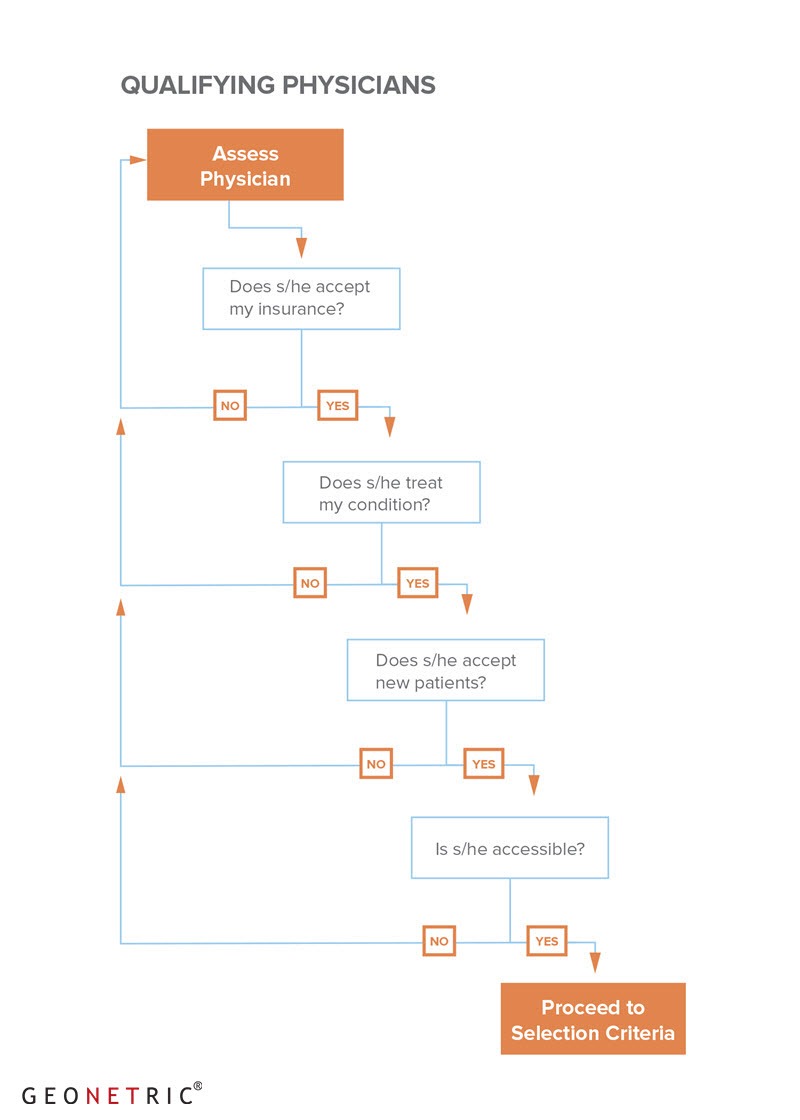As healthcare marketers, we often like to jump right to the tactics and bury ourselves in campaign work in the hopes that it will make a tangible difference. And sometimes it does. But more often than not, results are disappointingly modest, leaving us with the sense that we’re investing more and more just to maintain current performance.
Sometimes in our rush to do “stuff” or chase down the next great idea, we lose focus of the fact that we’re choosing the work we do based on how clever it sounds and not by how it supports the patient journey.
But it doesn’t have to be this way. One of the most important things we can do to promote our organization’s physicians is to take the time to understand how patients actually choose the physicians they do. It’s far from random. In fact, there’s a model and a process at work, and this has implications for your physician promotions tactics and strategies. So before you spend more time doing the things you’re already doing to bring new patients in the door, it’s worth taking a moment to understand how your activities actually intersect with how patients choose the physicians they do. Investing here can help you tighten your tactics and expose new opportunities.
In our work helping hospitals and health systems market their physicians, we’ve developed a working model that we use. It helps us focus and identify opportunities for improvement at client organizations. And now you can use it to help you with your own work.
The first thing to understand is this: Patients engage in two distinct but related activities when selecting a physician. The first activity is called Physician Qualification, and it reflects the assessment by the (prospective) patient of whether or not a given physician is even a potential option for consideration. Physicians that fail to qualify for one reason or another are dismissed from further consideration. Those who do qualify continue to be assessed, and may ultimately be selected for an appointment.

Based on our research and experience, for non-emergency, insured patients, the most important criteria patients use to qualify a physician is whether or not they accept their insurance. If not, patients will usually move in favor of physicians who they know they can work with.
After they’ve ascertained that the physician will accept their insurance, patients commonly seek to further qualify physicians based on the following criteria:
- Treats Relevant Conditions: Patients qualify physicians by whether or not they treat their conditions. For example, one generally wouldn’t consider a nephrologist when seeking treatment for a dermatological condition.
- Accepts New Patients: Most patients will not consider a physician if they learn that he or she is not accepting new patients.
- Accessible by Proximity: This is a subjective measure, but it is often important. Barring niche specialization, a physician who accepts a patient’s insurance but is seven hours away is likely not going to be considered against other physicians who practice closer. Don’t assume that only great distances preclude a physician from consideration. Certain demographics may not have access to reliable transportation, may be limited to physicians who are accessible by public transportation, or may not be able to leave their jobs for daytime appointments.
As you can see, patients use each of the qualifying criteria to quickly winnow the pool of potential physicians to a subset that’s worthy of further consideration. And this can have important implications for your physician promotion work. Ask yourself this: Can patients quickly discover what insurance programs your physicians work with? If not, are you losing patients? Can patients quickly identify whether or not the physician can treat their conditions? Sometimes health organizations assume specialty information alone conveys this, but often specialty titles don’t help consumers. Take a hard look at your physician promotion efforts, work through the considerations patients use to qualify physicians, and ask yourself if you’re actually leading patients down the path to conversion by helping them qualify relevant physicians. An honest evaluation here can pay dividends.
As mentioned previously, Physician Qualification is just the first step in the process of selecting a physician. The second step, Physician Selection, also has ramifications for what you do. To learn more about this and other ways to effectively promote your physicians online, watch our on-demand Physician Promotion webinar.
